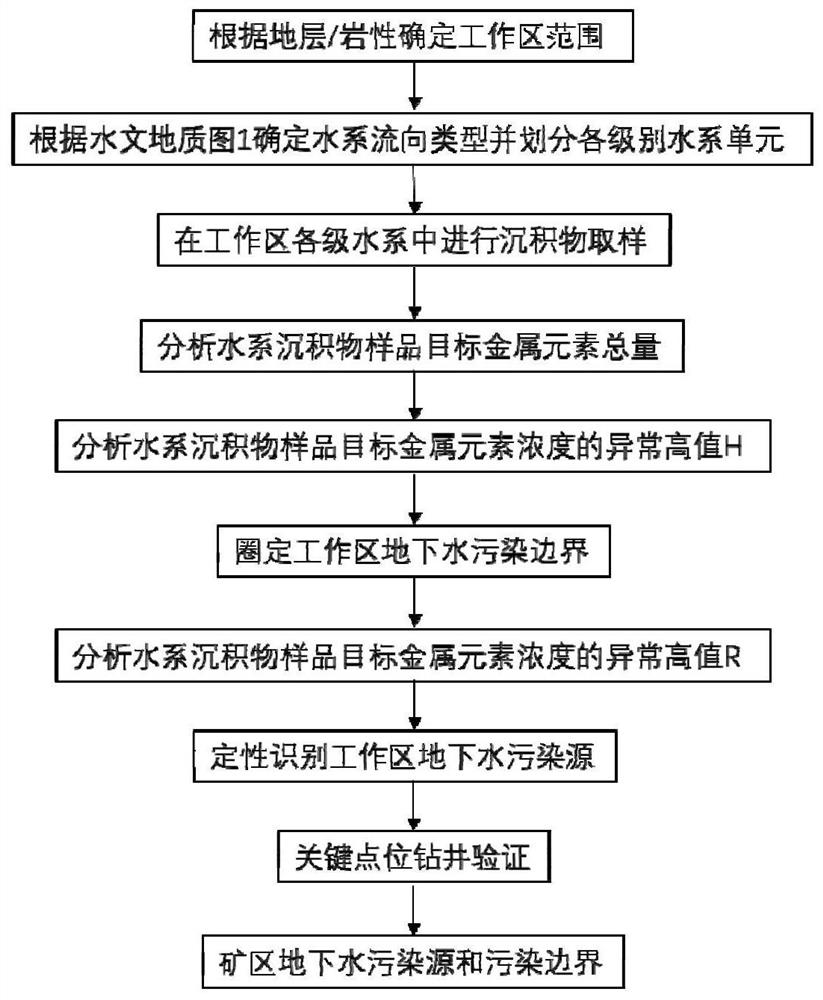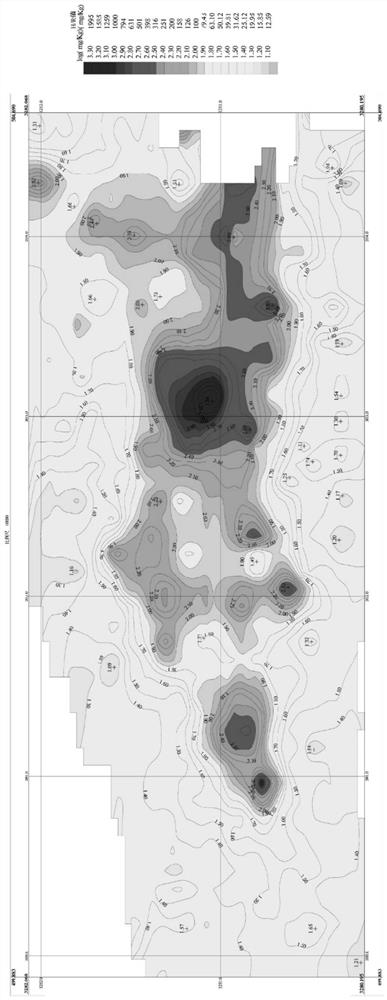A method for analyzing heavy metal pollution sources and pollution boundaries of groundwater in metal mining areas using water system sediments
A water system sediment and heavy metal technology, applied in the field of environmental pollution prevention and control, can solve the problems of strong randomness of monitoring wells, high cost, and deviation in determining the scope of groundwater pollution, and achieve the effect of reducing investigation costs, improving efficiency, and promoting technological progress in the industry
- Summary
- Abstract
- Description
- Claims
- Application Information
AI Technical Summary
Problems solved by technology
Method used
Image
Examples
Embodiment Construction
[0031] Below in conjunction with the accompanying drawings and specific embodiments, the present invention and other related features are described in further detail:
[0032] Take the source analysis of arsenic pollution in groundwater in an arsenic-bearing metal mining area and its pollution boundary discrimination as an example.
[0033] Step 1. Determine the scope of the work area according to the strata and lithology of the primary halo of the arsenic deposit in the mining area: There are 3 kinds of strata and 4 kinds of lithology distributed in the area where the primary halo of the arsenic deposit in the mine is located, namely Silurian, Ordovician, Cambrian System and carbonate rocks (limestone and dolomite), calcareous shale, hydrothermal siliceous rock, breccia. Therefore, the aquifer area of these 3 strata and 4 lithologic combinations is the scope of the working area, and the surface area corresponding to the continuous and uninterrupted distribution area of th...
PUM
 Login to View More
Login to View More Abstract
Description
Claims
Application Information
 Login to View More
Login to View More - R&D
- Intellectual Property
- Life Sciences
- Materials
- Tech Scout
- Unparalleled Data Quality
- Higher Quality Content
- 60% Fewer Hallucinations
Browse by: Latest US Patents, China's latest patents, Technical Efficacy Thesaurus, Application Domain, Technology Topic, Popular Technical Reports.
© 2025 PatSnap. All rights reserved.Legal|Privacy policy|Modern Slavery Act Transparency Statement|Sitemap|About US| Contact US: help@patsnap.com



